Nikon COOLSHOT AS Rangefinder Review
The options provided to golfers in today’s market seem to be immense. For clubs, shaft, loft, and lie options provide the most optimal setup for best results. In the market of rangefinders, the Nikon COOLSHOT AS provides much the same. Various options for distance measurements, target priorities, and unit of measurement variation are all readily adjustable at the fingertips, allowing users to customize the unit to their preferred method. All of these features and more have been provided in a reasonably sized, resilient frame.
Highlights from Nikon
Gain Confidence – The COOLSHOT AS Golf Laser Rangefinder combines Nikon’s legendary optical performance with some of the most advanced distance measurement technologies available today. It features the all-new Golf Mode with ID (Incline/Decline) Technology to provide you with the slope-adjusted distance for an accurate reading for uphill or downhill shots.
Featuring Golf Mode – Using Nikon’s ID (Incline/Decline) Technology – Get the slope adjusted distance for any uphill or downhill shot, thanks to the all new Golf Mode – found only in Nikon’s COOLSHOT AS rangefinder. By utilizing Nikon’s highly advanced ID Technology, you can be confident that you have an accurate angle-compensated distance, so that you can select the right club and hit the ball at the proper trajectory.
Define the Yardages of Each Club in Your Bag – Knowing your personal yardages for every club will give you an extra advantage when facing difficult shots during play. By using a COOLSHOT AS Laser Rangefinder to learn your distances while you train, you’ll gain the precise knowledge you need to improve your score on the course.
An Accessory That Won’t Weigh You Down – On those warm summer days on the course, even the lightest golf bags can seem like a load. That’s why the COOLSHOT AS was designed to be extremely lightweight and compact. It can be stowed conveniently in your pocket or attached to your bag, you’ll hardly even notice the six and a half extra ounces of this portable laser rangefinder.
Lock On To The Pin – The COOLSHOT AS rangefinder features Nikon’s advanced technology that allows you to simply scan across the backdrop of the green until the flag or pin yardage displays the closer distance. With 8-seconds of continuous ranging with a single push of the button, there is no need to worry about the effects of hand-shake interfering with getting the distance to the pin.
Withstands Any Conditions – Those dark clouds come up and you’re trying to finish that last hole in hurry. Most golfers have all been there. Even if you get caught in the rain – not to worry – the COOLSHOT is waterproof!
Out of the Box
There are a couple immediately notable features about the Nikon COOLSHOT AS rangefinder. To begin, the size is quite compact, making it very manageable both in the hands and in the golf bag. Various compartments of a typical stand bag as well as cup holders in a standard golf cart accommodated the size of the unit. Utilizing the COOLSHOT AS in hand was very comfortable, thanks largely to the size being reasonable for a firm one-handed grip.
The COOLSHOT AS offers a multiple of different features, from various measuring modes (golf, horizontal + height, and actual distance + height) to target priorities. The process of changing between modes is relatively simple, however not something users would be inclined to change during a distance measurement for each golf shot. The battery can last approximately 13,000 cycles according to Nikon, but testing did not confirm this to be true or false.
Measurement Display Modes
Users can decide what best suits their need on a golf course in terms of how the distance is measured. Here are the modes better explained:
Actual Distance and Height Mode – After shooting a target, the large centered number on the display reports the actual straight line distance to the target. Displayed on the bottom right of the screen will be the height difference between location and target. The triangle/arrow image will change and represent whether the shot is uphill or downhill.
Horizontal Distance and Height Mode – After shooting the target, the large centered number on the display reports the distance to the target horizontally (on a straight, flat line) rather than considering height changes. Despite this readout, height variation is still represented on the bottom right, and again the image reflects whether the target is above or below the measurer.
Golf Mode – After shooting the target, golf mode offers slope adjusted distance to accommodate for the change in elevation between the ball location and the target location, which is displayed in the center of the internal display. While this calculation is provided to make club selection easier, actual distance is still provided in the bottom right of the screen for consideration.
Actual Distance Mode – for extremely simple, non-complex readouts, users can switch to actual distance mode. The only output will be centered on the internal display, showing the actual distance from the user location to the target.
One of the most valuable features for fast pin seeking is the Target Priority Mode. With “First Target Priority Mode” selected, the distance sought by the COOLSHOT AS focused on targets in the foreground. This makes perfect sense for a flag with trees or bunkers directly behind. Testing proved time and time again that even aiming the crosshairs just off the flag results in quick and accurate flag readouts. For golfers who are on the move and require fast feedback, this mode will really perform.
While this is a big benefit for reading flags, it does hinder the ability to accurately represent distances when trying to read fairways, bunkers, trees, and other targets when shooting from the tee box. Depending on the user and interest in getting easy readouts, it isn’t difficult to switch from First Target Priority to Distant Target Priority mode; however it could become a nuisance changing multiple times throughout the round.
Measuring
While utilizing the various measuring and priority modes has been explained, it is important to discuss the ability of the COOLSHOT AS to begin pursuing a target and offer sound readouts in a timely manner. Compressing the power mode activates the unit, and compressing again begins the process of seeking a distance. While processing, the laser irradiation mark (what appears as a large “X” in the crosshairs flashes until a distance is acquired. Typically the timing is very quick (within a second) however testing found it best to hold down the measurement button until the pin distance is realized. In the case of this unit, some power issues arose with the battery chamber cover disconnecting and not being as secure, however this could relate to it being a media sample.
Internal Display
The information provided by the COOLSHOT AS is laid out well across the display and is relatively easy to see whether testing with the naked eye or wearing sunglasses. The images explaining incline vs. decline, large distance readout along with the smaller height/actual distance readout are all easy to discern visually. The device does have an interesting tendency to leave lighter lines on the base line of the large distance readout, but not always. This can make it a bit slower to read some distances however it is never completely unclear what the output represents.
Parting Thoughts
Rangefinders as a whole make quick and accurate distance readouts available to users. The Nikon COOLSHOT AS confirmed ease of use and functionality can be packaged well in a device that is resilient to the elements and user clumsiness (waterproof, rubberized body). Offering a solid variety of measuring modes, preferential targeting, and solid battery life, this unit would undoubtedly meet the needs of most golfers. For more information on the Nikon COOLSHOT AS and to purchase this unit for $349.99, go to www.nikon.com.






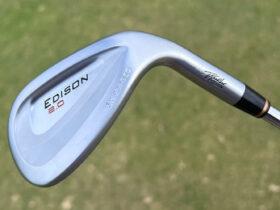





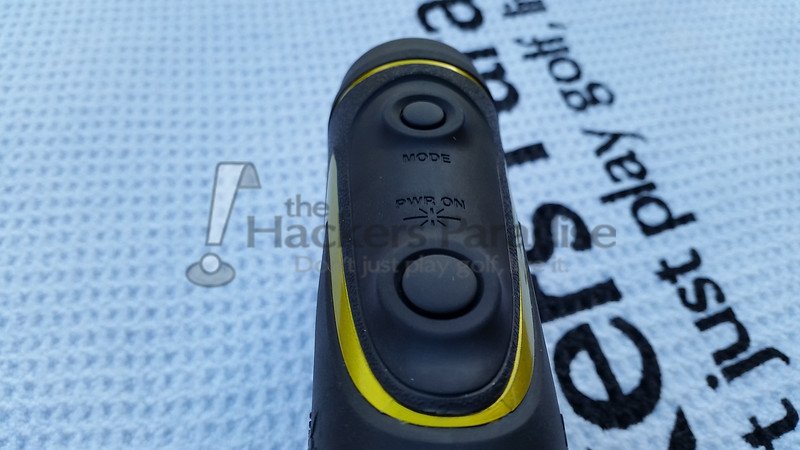
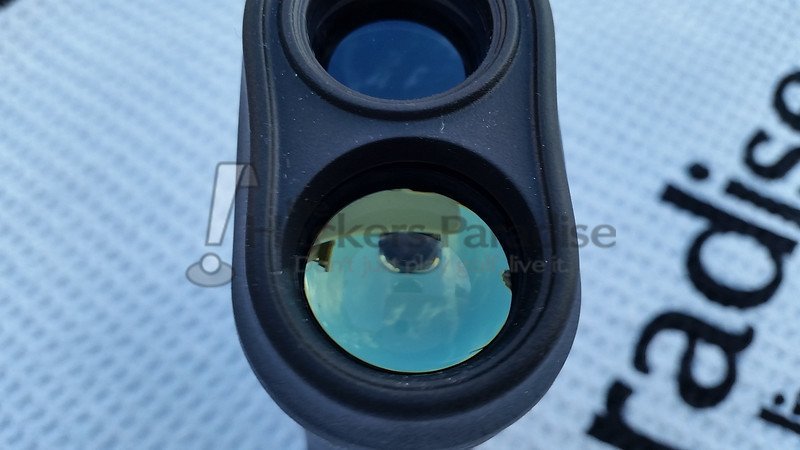
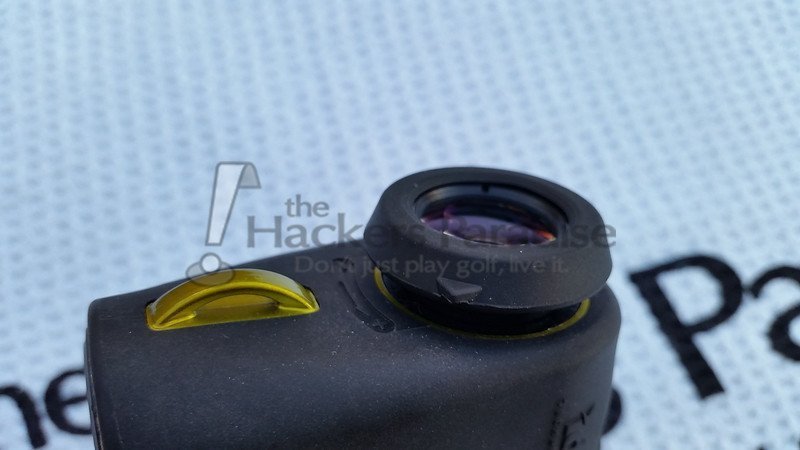
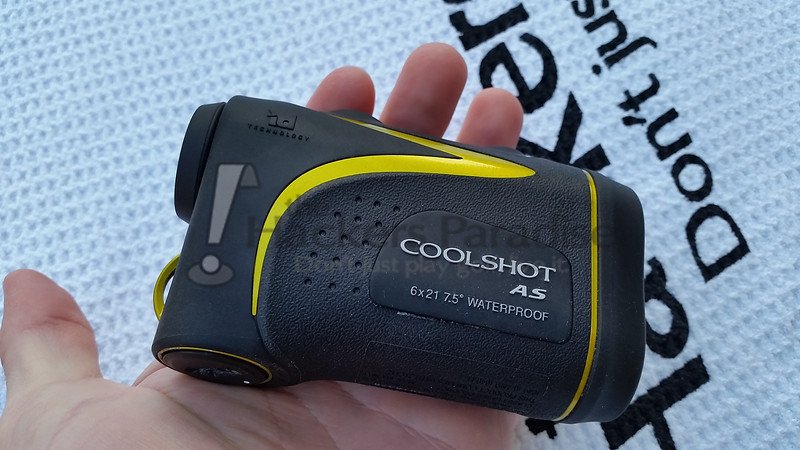





Solid review here Dan, not surprised to hear that it performed extremely well given Nikon and their reputation.
Cool to see that this one is waterproof as well. Only have one question that I’m uncertain if it was answered in the review: can the slope option be turned off? I saw that it appears after the traditional distance is displayed but unsure if there was a mode for non-slope?
Thanks for the great information Dan.
I’m in the market for a new rangefinder & while the price on this one is a little steep, the options and quality are great for what you are paying for. I also like the size of the unit as well.
Thanks again for a great review.
I am a Bushnell fan, but I like the way this sounds, The waterproof part is a pretty big deal.
Cookie: The unit can be switched to Actual Distance Mode, which is nice because I haven’t been a fan of the slope function.
That is a whole lot of tech packed into one device. I like the look and the compactness of the unit.
Thanks for sharing DannyBoy!
$199 at Dicks today. Hmmmm
Solid review Dan, the slope measuring is a deal breaker for me though. Play in too many tournaments still.
how do you get it to the golf mode?